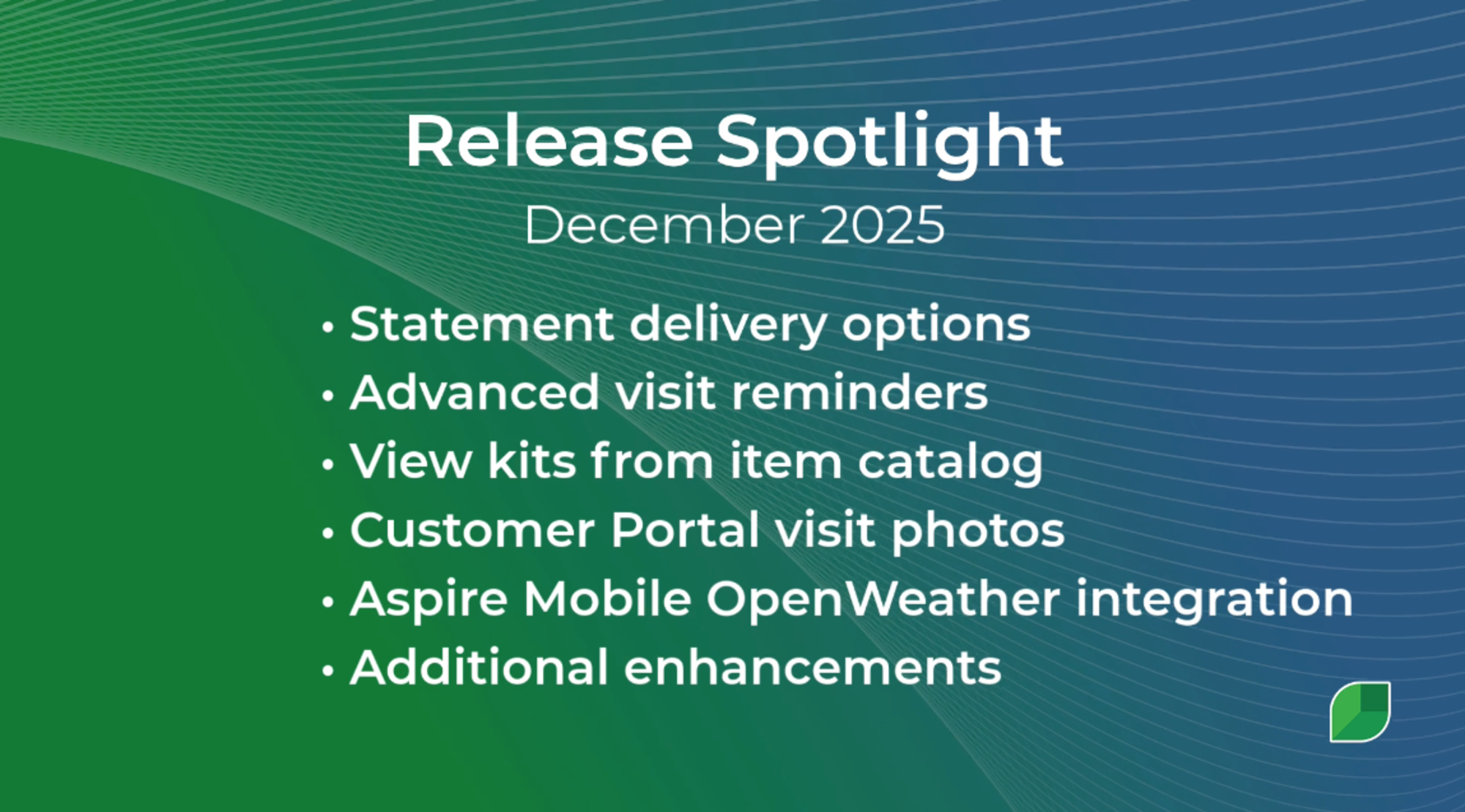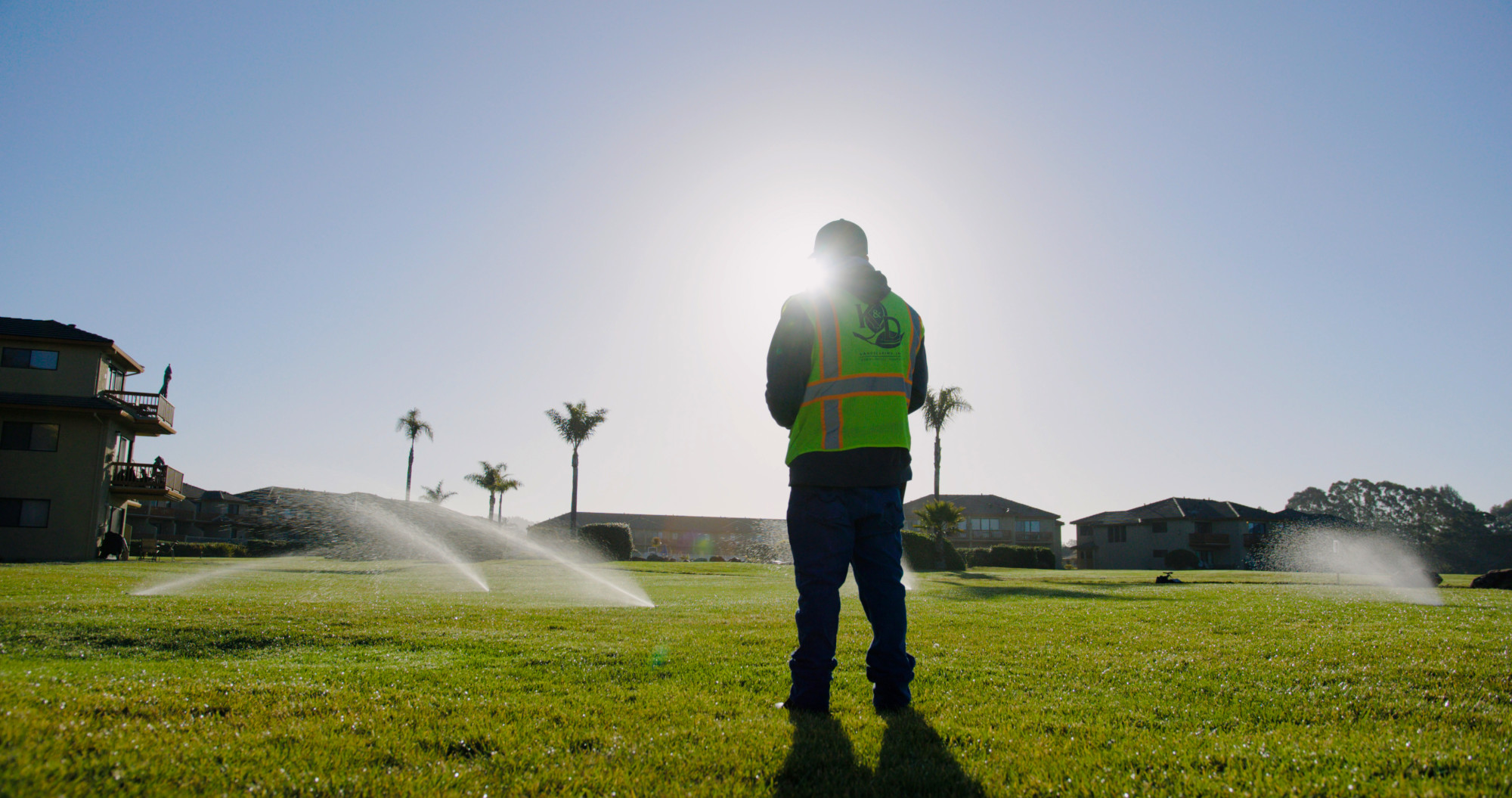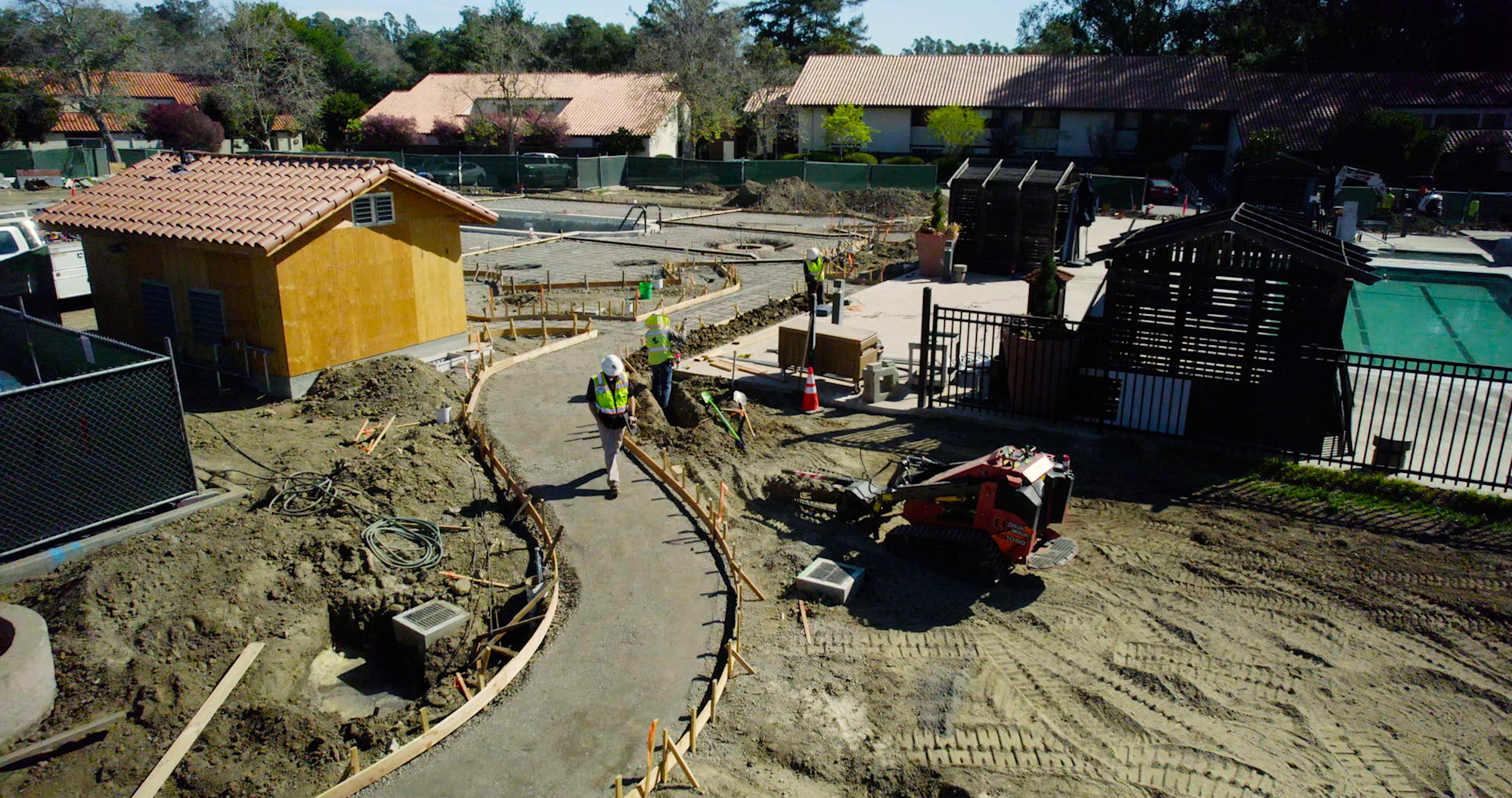Table of Contents
Table of Contents
- The Shortlist of Office Pain Points (and How AI Relieves Them)
- Scheduling Collisions & Phone-Tag
- The Pain
- AI Solution Framework
- Inefficient Routing
- The Pain
- AI Solution Framework
- Missed Follow-Ups & Slow Estimates
- The Pain
- AI Solution Framework
- Customer Communication Gaps
- The Pain
- AI Solution Framework
- Back-Office Throughput Without More Headcount
- Inventory Management Automation
- The Current Bottleneck
- AI Solution
- Preventive Maintenance Intelligence
- The Current Bottleneck
- AI Solution
- Field-Data to Office-Action—Closing the Loop
- Telemetry-Driven Operations
- Telemetry Applications
- Specific Implementations
- Operational Impact
- Intelligent Ticket Triage
- The Current Challenge
- AI Solution Framework
- Triage Examples
- Implementation Details
- Business Impact
- Aspire to Solve Your Pain Points
- See Your Bottlenecks, Then Break Them
It’s 8 a.m. on a Monday at a landscaping company’s office.
The phones are already ringing. Two crews are calling with route questions.
A customer is frustrated about the missed appointment last week.
The office manager is scrambling to sort out scheduling conflicts caused by rain delays. Within minutes, the day feels less like managing operations and more like putting out fires.
Too many offices operate under reactive management—scrambling to solve problems as they arise instead of preventing them from happening in the first place.
Also, the bottlenecks don’t occur in isolation.
A single scheduling issue can lead to routing confusion, miscommunication with customers, and ultimately, declining satisfaction scores.
The numbers highlight just how costly these inefficiencies can be:
The average office manager spends 12 hours a week resolving scheduling conflicts and rescheduling alone.
Every missed phone call costs businesses an average of $1200.
A 10-minute delay per job can result in an hour of lost productivity per crew per day, adding thousands to yearly operational costs.
Artificial intelligence offers a different path.
Instead of relying on reactive firefighting, AI can transform office operations into proactive, coordinated systems. That means fewer missed calls, faster response times, and a smoother customer experience.
The opportunity isn’t futuristic technology replacing people. It’s about giving leaders and staff measurable relief from the daily grind. With the right AI tools, offices can shift from managing chaos to driving efficiency, productivity, and client satisfaction.
This playbook examines common office bottlenecks and maps them to concrete AI solutions designed to reduce input, increase throughput, and maximize capacity without adding headcount.
The Shortlist of Office Pain Points (and How AI Relieves Them)
Scheduling Collisions & Phone-Tag
The Pain
Every landscaping office knows the frustration of scheduling conflicts. Crews often get double-booked, leaving customers disappointed. A rainy week means spending hours on the phone rescheduling jobs. Staff who should be focused on growth are tied up juggling calendars. Customers, meanwhile, grow impatient with slow response times.
AI Solution Framework
AI eliminates a lot of back-and-forth by managing schedules dynamically:
AI appointment booking lets customers self-schedule based on real-time crew availability.
Calendar sync detects conflicts across crews, equipment, and client preferences.
Automated confirmations send reminders and include contingency plans for weather delays.
Inefficient Routing
The Pain
Routing inefficiencies drain profitability.
Crews often drive past each other’s job sites, wasting time and fuel. Poor route planning can inflate operating costs and leave customers frustrated with late arrivals. These inefficiencies collectively result in lost productivity across the business.
AI Solution Framework
AI-powered routing adapts to real-world conditions and business needs:
Live traffic integration adjusts routes automatically to avoid delays.
Crew data optimization ensures the right skills and equipment are matched to each job.
Dynamic rerouting accommodates emergencies, cancellations, and last-minute requests.
Missed Follow-Ups & Slow Estimates
The Pain
Leads slip away when follow-ups lag.
Customers who wait too long for estimates often choose competitors that respond faster. Busy offices often overlook follow-up calls amid daily chaos, leading to lost opportunities and revenue leakage due to incomplete sales processes.
AI Solution Framework
AI helps maintain sales momentum with timely nudges and automation:
AI-driven reminders ensure follow-ups and overdue estimates are never missed.
Templated estimate generation leverages property data to create accurate and consistent pricing.
Lead scoring ranks prospects by value and probability of closing.
Customer Communication Gaps
The Pain
Many customer frustrations stem from poor communication.
Clients call for updates that crews should have provided. Misunderstandings arise over arrival times or job scope. Offices often spend time reacting to complaints rather than proactively managing expectations. After-hours inquiries often go unanswered, leaving customers in a state of limbo.
AI Solution Framework
AI enhances customer communication with proactive, automated touchpoints:
Proactive notifications update customers at each milestone of the job.
24/7 chatbots handle FAQs, from pricing to scheduling.
Intelligent escalation routes complex issues to the right team member.
Back-Office Throughput Without More Headcount
Inventory Management Automation
The Current Bottleneck
Managing materials across multiple jobs is a constant strain on landscaping offices. Staff often track inventory manually, relying on spreadsheets or phone calls to check what’s available. This creates two expensive problems: emergency supplier runs that disrupt schedules and overstocking costly materials “just in case.” Crew downtime waiting for deliveries adds further inefficiency, eroding both productivity and customer satisfaction.
AI Solution
AI can track materials like mulch, fertilizers, and plant inventory levels. It can then generate automated purchase orders when supplies are low. Meaning by integrating with job scheduling, AI can anticipate material requirements before they become urgent. Supplier integrations enable the system to automatically place orders, coordinate deliveries, and optimize bulk purchasing for cost savings.
Implementation Details
Real-time inventory updates through barcode scanning or RFID tracking.
Predictive analytics that factor in seasonal patterns and job types.
Automatic vendor selection balancing price, quality, and delivery speed.
Exception handling to flag rush orders or specialty materials for review.
With AI-driven inventory management, offices spend less time firefighting shortages and more time ensuring crews always have what they need, when they need it.
Preventive Maintenance Intelligence
The Current Bottleneck
Equipment downtime is one of the biggest disruptors in landscaping operations.
Breakdowns not only derail schedules and frustrate customers, but they also cost far more than preventive care.
Yet many offices still rely on manual calendars or paper logs to track service schedules. With dozens of machines to maintain, oversights are inevitable. The result is reactive maintenance, lost productivity, and higher long-term costs.
AI Solution
AI can analyze equipment usage data and predict potential maintenance needs. By analyzing usage patterns, AI can identify the optimal time for service before failures occur. Connected to inventory systems, the platform can ensure replacement parts are ordered in advance. Service scheduling becomes proactive, timed to minimize disruption rather than repair damage.
Implementation Details
Telematics data feeds into predictive models, measuring real-world usage.
Maintenance alerts based on hours of operation or pressure readings—not just dates.
Integration with service providers enables automated scheduling.
Historical failure data improves accuracy and reduces surprise breakdowns.
AI-powered maintenance intelligence turns equipment from a liability into a predictable, managed asset—keeping crews productive and customers satisfied.
Field-Data to Office-Action—Closing the Loop
Telemetry-Driven Operations
In many landscaping businesses, field data remains in the field, while office decisions are made in isolation.
Crews complete jobs, record notes, or track hours, but that data doesn’t always flow back into central systems. AI bridges this gap by converting field telemetry into actionable intelligence, enabling offices to make decisions with immediate operational impact.
Telemetry Applications
Aspire Integrated Telematics, powered by Azuga, already demonstrates the potential: GPS and dashcam data can provide real-time location tracking, driving behavior analysis, and job completion metrics. With AI layered in, field data can fuel predictive decisions:
Real-time location data optimizes next-day routing.
Driving behavior analysis helps reduce fuel costs and improve safety.
Job completion times enhance the accuracy of future project estimates.
Specific Implementations
Yesterday’s traffic patterns inform today’s route planning.
Equipment usage logged on Monday prioritizes Tuesday’s maintenance tasks.
Property insights collected in the field enhance future service recommendations.* Crew performance metrics enable smarter job-to-crew assignments.
Operational Impact
The result is tighter coordination across the field and office: customers receive more accurate time estimates, crews are matched to the right jobs, fuel expenses are reduced through more intelligent routing, and safety improves through behavior monitoring and coaching.
Intelligent Ticket Triage
The Current Challenge
Not all customer issues are created equal, yet many offices treat them the same. This creates inefficiencies—routine maintenance requests consume the same attention as urgent, high-value client concerns—leading to resource misallocation and potential customer dissatisfaction.
AI Solution Framework
AI enables intelligent triage by combining customer and job data:
Customer value scoring weighs contract size, account history, and relationship duration.
Job risk assessment considers complexity, weather sensitivity, and deadlines.
Resource optimisation matches issue urgency with the right staff expertise.
Triage Examples
A commercial irrigation issue from a high-value client gets immediate dispatch of an experienced technician.
Routine residential maintenance requests are typically scheduled according to standard procedures.
Weather-sensitive jobs move to the front of the queue before storms.
High-value prospect estimates bypass the standard pipeline for a faster turnaround.
Implementation Details
CRM data feeds into scoring algorithms, while job complexity analysis references historical performance. Automatic escalation rules ensure VIPs and urgent cases are prioritised. Over time, performance tracking refines the model, improving accuracy with each cycle.
Business Impact
The payoff is clear: stronger customer retention through prioritized service, better crew satisfaction by aligning skills with needs, and fewer emergencies thanks to proactive intervention.
Aspire to Solve Your Pain Points
For many landscaping companies, the problem isn’t just inefficiency—it’s the complexity of stitching together multiple disconnected systems.
Aspire eliminates this problem by consolidating scheduling, routing, inventory, and communication data into a single platform.
With all critical information centralized, your team can make faster, better decisions and avoid the pitfalls associated with managing multiple vendors.
Aspire is the only end-to-end business management system built specifically for landscape contractors.
That means:
No need to manage multiple vendor relationships or troubleshoot integrations.
Unified training and support reduce the complexity of implementation.
Faster time-to-value thanks to pre-built landscaping workflows.
Current Features Delivering AI-Like Results:
Crew performance metrics enable smarter job-to-crew assignments.
Operational visibility provides real-time insights.
Customer management enables personalized communication and service delivery.
Financial integration for cost-aware decision making across jobs.
Current AI Features:
Titan Intelligence for generative AI capabilities in Aspire for writing and refining customer communications, marketing campaigns, and emails.
Scheduling Assistant is an intelligent tool to take the guesswork out of scheduling by analyzing availability, capacity, and conflicts when scheduling crews.
Future-Proof Investment: Aspire invests in product development, enabling new features to be rolled out automatically to existing users. Industry-specific workflows, scalable architecture, and ongoing training mean your system evolves with your business.
Implementation Support: From day one, you’ll have a dedicated Implementation Manager, industry expert training, and best practices. Aspire also provides ongoing optimisation, performance monitoring, and a direct feedback loop for feature enhancements.
With Aspire as your base, you’re not just solving today’s bottlenecks but adopting the innovations of tomorrow.
See Your Bottlenecks, Then Break Them
You don’t have to guess where your office is losing time and money. Your data already knows.
The challenge is unlocking it.
Aspire helps landscaping businesses move from assumptions to clarity, to see where the real bottlenecks are and how to fix them for scaling your landscaping business the right way.
With a live demo, you’ll see how Aspire addresses common pain points in scheduling, routing, inventory, and customer communication.
It’s more than a product tour – your current operations will be reviewed, and you’ll receive customized ROI projections to demonstrate the value Aspire can deliver.
Here’s what you’ll get:
Clarity into your top operational bottlenecks.
Alignment between Aspire’s features and your challenges.
Confidence with an implementation timeline and resource requirements tailored to your business.
The first step isn’t adopting AI tomorrow. The first step is building a stronger operational foundation today.
Aspire helps you streamline daily tasks, improve customer experience, and prepare your business for the technology of the future.
Schedule your demo and start breaking your bottlenecks.






